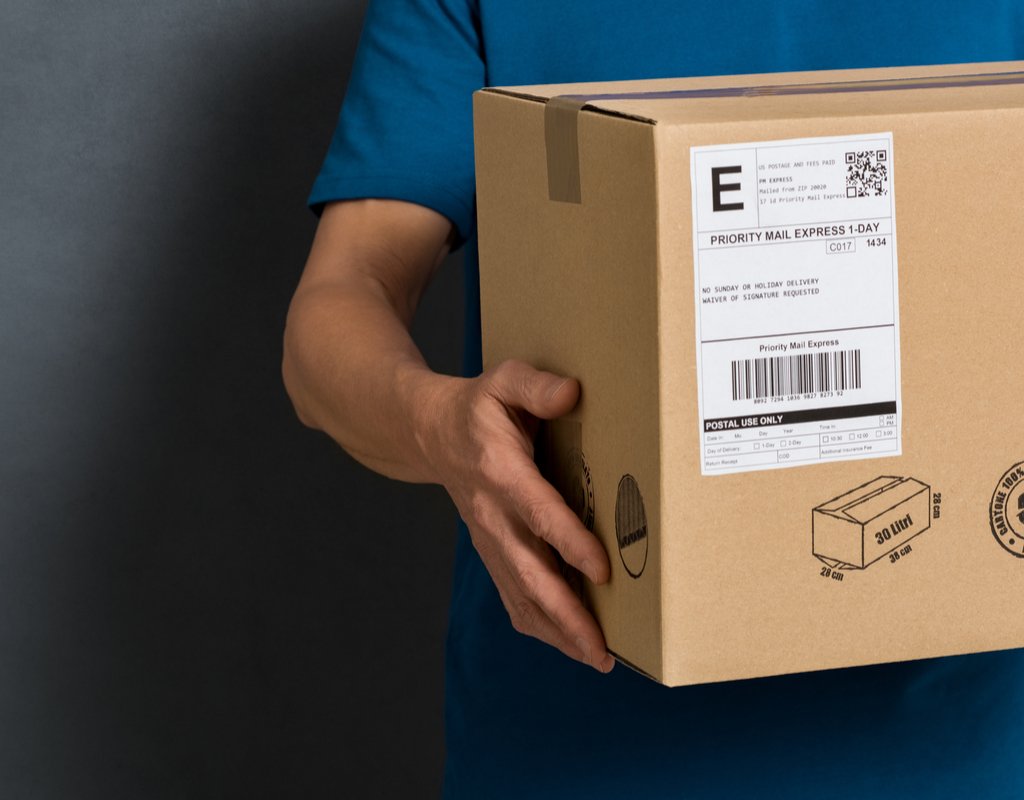
On the same week that your e-commerce site develops payment problems and a conveyor belt in your Delivery Centre breaks down you need to make a choice on what to focus on first. Which has the most impact on your business?
>Share this post<
by Michelle McSweeney
April 23, 2019
On the same week that your e-commerce site develops payment problems and a conveyor belt in your Delivery Centre breaks down you need to make a choice on what to focus on first. Which has the most impact on your business?
This was the choice faced by Emma Mead, the Group Omnichannel Director in Holland & Barrett. The leading health and wellness retailer operates 768 stores across the UK, Scandinavia, Benelux and Ireland as well as a global franchise business with an annual turnover of £656 million.
The issue with the Delivery Centre meant that picking and packing were slowed down considerably affecting next day delivery. Emma is responsible for all digital sales, marketing and customer acquisition. Speaking at The Delivery Conference she discussed making the obvious choice.
“I spent my time chasing down those payment problems because I thought they would have been the most important issue that we have had on our site in terms of delivering a poor experience.”
For an online store, payment seems the most obvious issue to impact business so Emma temporarily removed Next Day delivery options from the website.
Amazon, of course, realised the competitive advantage of fast deliveries making it integral to their loyalty program and investing millions into it. According to Amazon’s 2017 annual report, the company spent $21.7 billion in delivery in 2017— a number that includes fulfilment, delivery centre, and transportation costs. This is nearly double the $11.5 billion it spent on shipping in 2015.
This, in turn, has raised consumers expectations with other online retailers and raised the bar for the market as a whole. According to IMRG, over half of online shoppers now expect faster fulfilment and 68% of retailers have responded by offering next day delivery. There was a 28% increase in next day deliveries over the two years to 2018.
On a recent webinar with Scurri and Kooomo the companies presented the impact of delivery options on the checkout.
This was the choice faced by Emma Mead, the Group Omnichannel Director in Holland & Barrett. The leading health and wellness retailer operates 768 stores across the UK, Scandinavia, Benelux and Ireland as well as a global franchise business with an annual turnover of £656 million.
The issue with the Delivery Centre meant that picking and packing were slowed down considerably affecting next day delivery. Emma is responsible for all digital sales, marketing and customer acquisition. Speaking at The Delivery Conference she discussed making the obvious choice.
“I spent my time chasing down those payment problems because I thought they would have been the most important issue that we have had on our site in terms of delivering a poor experience.”
For an online store, payment seems the most obvious issue to impact business so Emma temporarily removed Next Day delivery options from the website.
Amazon, of course, realised the competitive advantage of fast deliveries making it integral to their loyalty program and investing millions into it. According to Amazon’s 2017 annual report, the company spent $21.7 billion in delivery in 2017— a number that includes fulfilment, delivery centre, and transportation costs. This is nearly double the $11.5 billion it spent on shipping in 2015.
This, in turn, has raised consumers expectations with other online retailers and raised the bar for the market as a whole. According to IMRG, over half of online shoppers now expect faster fulfilment and 68% of retailers have responded by offering next day delivery. There was a 28% increase in next day deliveries over the two years to 2018.
On a recent webinar with Scurri and Kooomo the companies presented the impact of delivery options on the checkout.
The costs of Next Day shipping.
Next day deliveries are more expensive for an e-commerce store eating into already narrow profit margins. Not to mention adding more pressure to fulfilment and logistics. So how do retailers do it?68% of business owners consider shipping costs to be their biggest operational challenge, according to the GoShippo State of Shipping report.
It is no wonder that faster fulfilment is one of the 9 trends affecting last-mile deliveries. Shipping for which you normally had an hour to prepare and fulfil, now have to be ready in minutes, which poses challenges in terms of planning and technology.
The most important thing is to put the choice into the hands of the customer. Give them the options to make the best choice for them. 45% of customers have abandoned a basket online because they have been faced with unsatisfactory or unavailable delivery options. This increases when you surprise them with hidden delivery costs they were not expecting. A consumer who gets a nasty surprise at the end of the checkout when shipping, customs and tax is added is unlikely to complete the checkout. Or even come back to your store again. Give those costs upfront and let the consumer choose the shipping options that suit them.
Expedited shipping can be used as a marketing incentive. Businesses can upsell and increase the basket value by offering free expedited shipping when customers order over a certain amount or on high-profit items. For low-profit items, you can give the delivery option to consumers and let them choose the additional cost.
For certain bestsellers, some of our customers have set up additional warehouses closer to their core markets. This allows them to ship product locally at significantly lower cost and offer next day and sometimes even same day options which have proved big incentives to shoppers.
Companies like Holland and Barrett are now investing heavily in connecting their stock management systems to make better use of local fulfilment and ship from store.
Instead, as she said, “we’re merely going like lunatics trying to get that order, process it through, throw on a vehicle, get it into the store for next day delivery, when actually we could have picked it from that store.”
Online retail customers want fast delivery at a reasonable price but it is important to be clear about what customers define as fast shipping.
According to a CNBC report:
- 96% of consumers view same-day shipping to be “fast.”
- 95% consider next day shipping to be just as fast.
- This drops to 92% when shipping takes two days,
- and dips all the way to 63% when shipping takes three to four days.
The opportunity costs of Next Day delivery.
The following week when Emma and the Holland and Barret team looked at the analysis they realised their mistake.“The conversion rate impact of removing next day delivery from the site was X3 higher than the payment issue problem.” –Emma Mead, Holland and Barrett.
On further digging, the team could see that a lot of their new customers use next day delivery. Removing it dramatically affected conversion rate and customer acquisition. 50% of online growth comes from new customers every week. The lifetime value of those customers was significantly higher than the short term payment issues.
A major Scurri customer also realised this and provides newly acquired customers with next day delivery for the first three shipments. After those three shipments, they found that customer loyalty was built and trust in the brand is established.
According to research from the Carrier Stuart.com online frustrated online customers are spending £4.9 billion less with online retailers because the delivery options do not fit their needs. Their survey reveals that one-third of consumers will select a high street retailer that offers a choice of delivery options over one that does not. And over half would pay a premium for fast delivery, offering a potential extra £94m in revenue from shipping alone.
An older study from Econsultancy found that four in five consumers (58%) will take action to add more items to a shopping basket just to qualify for free shipping.
Brexit delays.
Europe accounts for 50% of all UK exports of goods at the moment. Belgium, Sweden and Ireland are the most valuable European export destinations, in terms of the highest average value per parcel shipped there from the UK according to Paul Watson of Volo.However, the unknowns around Brexit means there are fears for delays with borders affecting the possibility of offering Next Day options. Increased trading costs could make it unprofitable and difficult to compete. Some retailers are already preparing for this by setting up fulfilment centres across Europe to allow them to ship locally.
Track and measure
What was great about Emma’s talk was that it revealed how important and ingrained tracking and reporting is to the teams growth efforts. It’s important to measure the impact of any changes you make to the full customer journey (Not just the e-commerce store itself) to determine the success of individual approaches.The eCommerce metrics to track and report on are:
- Conversion rate
- Average order value
- Margin per order
- Lifetime value
- Returns
- Net promoter score (NPS)
Preparing for next day shipping: Retailer checklist
- Embed the customer in your delivery strategy
- Exceed customer expectation – Speed, price, convenience
- Quantify the cost of delivery fails for your business and analyse the trends
- Collect and harvest your business data to understand your customer and business needs
- Invest in technology and BI
- Future proof your business through innovation
More to explore
Here’s an overview of the latest improvements that are now available in the Kooomo platform.
In the next few years, we are foreseeing an impressive increase for the global retail industry. While this can be beneficial for the global eCommerce industry, it also means that there will be more competition, as well.

 en
en 

